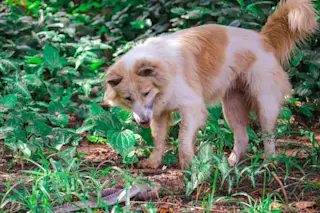Dogs' lack of fear might explain why they're so at risk of life-threatening snakebites. Photo Credit: Nantawit Chuchue/Shutterstock If you feel your stomach flutter uncomfortably at the mere image of a slithering serpent, you're not alone. It's thought that snakes make about half of us anxious, and 2-3% of people are Ophidiophobic—that is, they're deeply afraid of snakes. Such fear is thought to have deep roots; over the course of our evolutionary history, snakes are thought to have had such an influence on our risk of dying that we've evolved an innate fear of them, which has even influenced our visual acuity—an idea known as the Snake Detection Hypothesis. Whether we all really share an innate terror of snakes is still somewhat controversial, but the case is much clearer in dogs: our beloved canine companions simply aren't afraid of snakes, and that's probably part of the reason so dang many ...
Man's Best Friends Don't Share Our Fear Of Snakes
Discover why dogs are at risk of snakebites due to their lack of fear of snakes. Learn about the snake detection hypothesis and dogs and snakes.
More on Discover
Stay Curious
SubscribeTo The Magazine
Save up to 40% off the cover price when you subscribe to Discover magazine.
Subscribe













